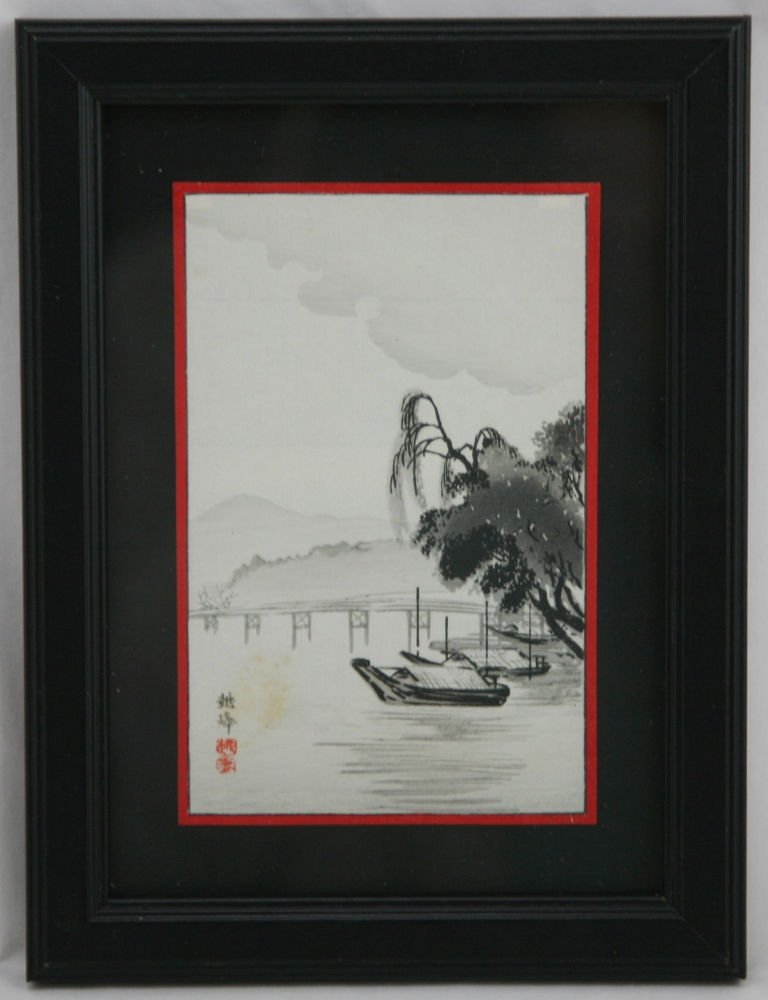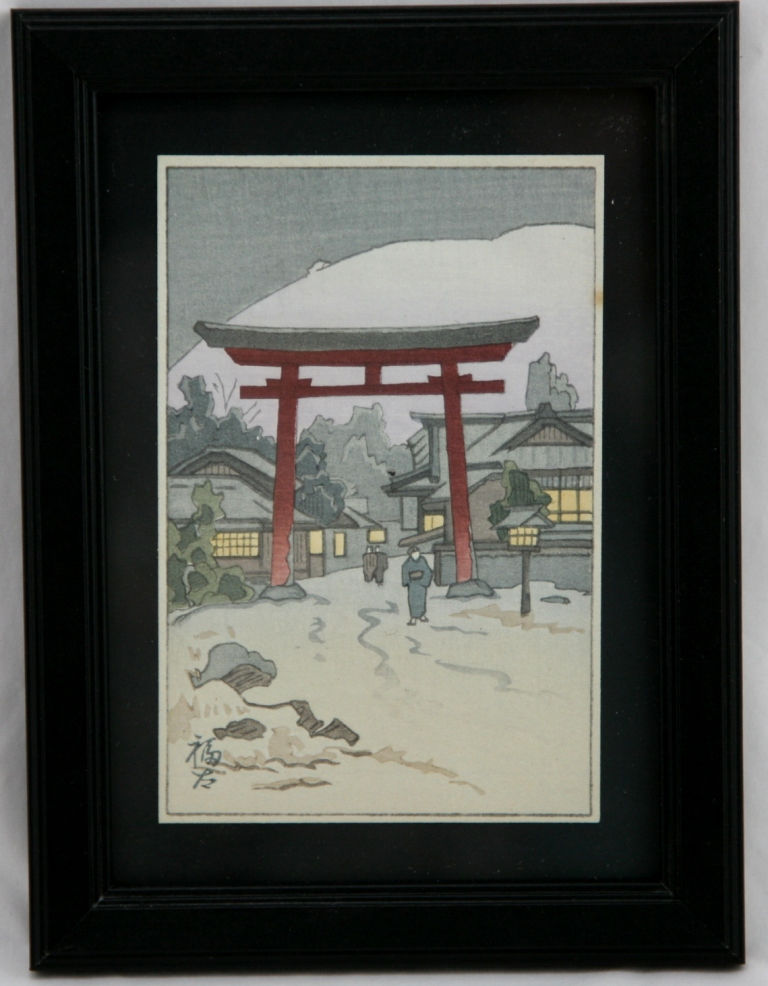Shin Hanga
Specializing in Japanese woodblock prints for sale, we sell shin-hanga, which means "new prints". Shin hanga was an art movement in early 20th-century Japan, during the Taishō and Shōwa periods, which revitalized traditional ukiyo-e art rooted in the Edo and Meiji periods (17th–19th century). It maintained the traditional ukiyo-e collaborative system (hanmoto system) where the artist, carver, printer, and publisher engaged in division of labor, as opposed to the sōsaku-hanga (creative prints) movement which advocated the principles of "self-drawn", "self-carved" and "self-printed", according to which the artist, with the desire of expressing the self, is the sole creator of art.
The movement flourished from around 1915 to 1942, though it resumed briefly from 1946 through the 1950s. Inspired by European Impressionism, the artists incorporated Western elements such as the effects of light and the expression of individual moods, but focused on strictly traditional themes of landscapes, famous places, beautiful women, kabuki actors, and birds-and-flowers.
The term shin-hanga was coined in 1915 by Watanabe Shōzaburō (1885–1962), the most important publisher of shin-hanga, with the aim of differentiating shin-hanga from the commercial mass art that ukiyo-e had been, though it was driven largely by exports to the United States.
Shin-hanga prints were directed to a Western audience largely through Western patronage and art dealers such as Robert O. Muller (1911-2003). Directed primarily to foreign markets, shin-hanga prints appealed to Western taste for nostalgic and romanticized views of Japan. Shin-hanga prints flourished and enjoyed immense popularity overseas. In the 1920s, there were articles on shin-hanga in the International Studio, the Studio, the Art News and the Art Digest magazines. In 1921, a Shinsaku-hanga Tenrankai ("New Creative Print Exhibition") was held in Tokyo. One hundred and fifty works by ten artists were exhibited. In 1930 and 1936, two major shin-hanga exhibitions were held at the Toledo Museum of Art in Ohio. They were the largest showcases of shin-hanga prints at the time.



































